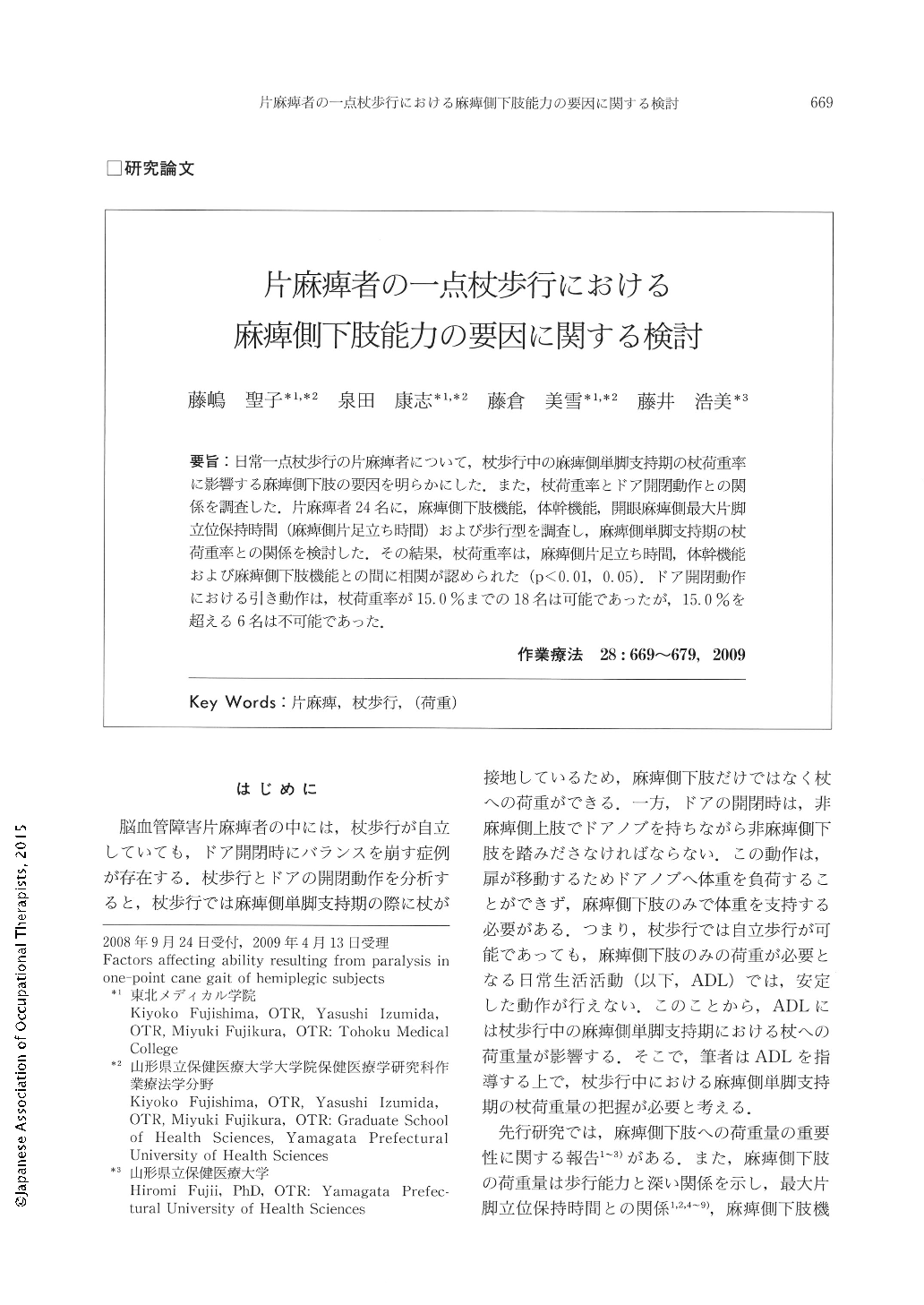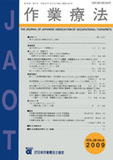Japanese
English
- 販売していません
- Abstract 文献概要
- 1ページ目 Look Inside
- 参考文献 Reference
要旨:日常一点杖歩行の片麻痺者について,杖歩行中の麻痺側単脚支持期の杖荷重率に影響する麻痺側下肢の要因を明らかにした.また,杖荷重率とドア開閉動作との関係を調査した.片麻痺者24名に,麻痺側下肢機能,体幹機能,開眼麻痺側最大片脚立位保持時間(麻痺側片足立ち時間)および歩行型を調査し,麻痺側単脚支持期の杖荷重率との関係を検討した.その結果,杖荷重率は,麻痺側片足立ち時間,体幹機能および麻痺側下肢機能との間に相関が認められた(p<0.01,0.05).ドア開閉動作における引き動作は,杖荷重率が15.0%までの18名は可能であったが,15.0%を超える6名は不可能であった.
This study surveyed ability factors of paralyzed lower extremities during hemiplegic subjects' onepoint cane gait. Hemiplegic subjects can gain gait independence through self-help using a one-point cane at home, but they are unable to maintain balance when they open and close doors. Consequently, the weight distribution of a cane (WDC) in the single-support period for a paralyzed limb is necessary for activities of daily living.
Nine characteristics of 24 hemiplegic subjects were recorded: age, sex, paralysis side, body weight, paralysis of lower-extremity function, postural control function, one-legged standing time of the paralysis side, gait type and WDC. Then the hemiplegic subjects' kinematic motion when opening and closing a door was investigated.
The results showed a correlation among one-legged standing time of the paralyzed limb, postural control function and paralysis of lower extremity function (p<0.01, 0.05). The highest correlation was one-legged standing time of the paralyzed side. However, the results did not show a correlation between gait type and weight distribution of cane in the single support period for the paralyzed limb. For 18 hemiplegic subjects opening the door using a pulling movement, the change in WDC from 10.2% to 13.9% was accompanied by the risk of falling. For weight distributions greater than 15.8%, subjects were unable to open and close the door.

Copyright © 2009, Japanese Association of Occupational Therapists. All rights reserved.


